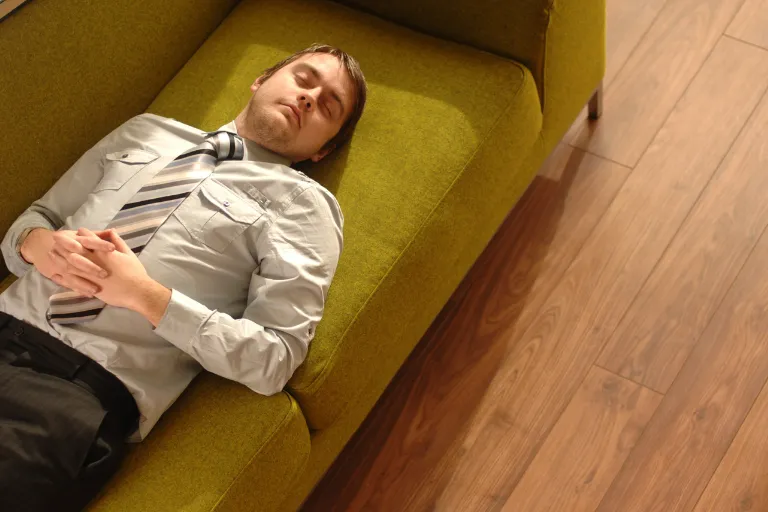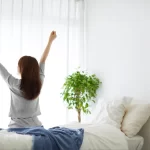Key Points
- Short naps (10–30 minutes) can improve mood, focus, and energy without disrupting nightly sleep.
- The timing of a nap—usually early to mid-afternoon—matters just as much as its length.
- Power naps can boost productivity, learning, and creativity, but longer naps risk grogginess.
- Creating the right nap environment—quiet, cool, and dark—makes naps more effective.
- Evidence suggests short naps are safe and beneficial for most adults when used wisely.
The Hidden Power of a Midday Rest
It’s mid-afternoon, and your eyes blur over another email. Your mind feels foggy, but there’s still a long to-do list waiting. Instead of grabbing a third cup of coffee, imagine closing your eyes for just 20 minutes and waking up sharper, calmer, and more focused. That’s the promise of the power nap—a simple practice with surprising science behind it.
Once dismissed as laziness, short daytime naps are now being studied for their potential to restore alertness, enhance learning, and even support long-term health when done right. But there’s a fine line between a refreshing nap and waking up groggy or tossing all night.
Why Power Naps Matter
Modern life is built on long hours, constant connectivity, and not enough sleep. Surveys suggest that about one in three adults in the U.S. doesn’t get the recommended seven to nine hours of sleep a night [1]. The result? Fatigue that spills into work performance, decision-making, and even mood.
Power naps offer a low-cost, drug-free way to bridge that gap. Unlike caffeine, which stimulates the nervous system but can disrupt sleep later, naps tap into the body’s natural rhythms. Research shows that short naps can restore performance to levels seen after a full night’s rest [2].
From Grogginess to Workplace Stigma
Still, napping isn’t always easy. Many people worry that a nap will leave them groggy—known as sleep inertia—or interfere with falling asleep at night. In workplaces, cultural stigma may label nappers as unproductive, even though science points the other way.
For shift workers, parents of young children, and busy professionals, daytime fatigue can feel unavoidable. The question becomes: how to nap smart, not long?
Understanding Sleep Cycles and the Sweet Spot
To understand why short naps work, it helps to know a little about sleep cycles. During a full night’s rest, the brain cycles through stages: light sleep, deep sleep, and REM (dream) sleep. Each cycle lasts about 90 minutes [3].
A power nap aims to stay in the lighter stages of sleep, before the body enters slow-wave deep sleep. That’s why 10–30 minutes is considered the “sweet spot.” Any longer, and you risk waking up in the middle of deep sleep, leading to grogginess and disorientation.
Timing also matters. Human energy naturally dips in the early afternoon—what some call the “post-lunch slump.” Napping during this window, roughly between 1 p.m. and 3 p.m., aligns with your body’s circadian rhythm and minimizes disruption to nighttime sleep [4].
Practical Strategies for the Perfect Nap
Want to try power napping without the pitfalls? Here are evidence-based strategies:
- Set a timer: Aim for 10–30 minutes. Even a “micro-nap” of 10 minutes can boost alertness.
- Nap early, not late: Stick to early or mid-afternoon. Napping after 4 p.m. raises the risk of nighttime sleep problems.
- Create the right environment: A quiet, cool, and slightly dark space makes it easier to fall asleep quickly. Eye masks or noise-canceling headphones can help.
- Try a “coffee nap”: Drinking a small cup of coffee right before a short nap may enhance alertness. Caffeine takes about 20 minutes to kick in, so it aligns with your wake-up time [5].
- Keep it consistent: Regular short naps may be more beneficial than occasional long ones.
When Napping Backfires
Napping isn’t for everyone. People who already struggle with sleep problems—like difficulty falling or staying asleep—may find that napping worsens the issue [6]. Others may experience headaches or disorientation after longer naps.
That said, for most healthy adults, short naps are considered safe and beneficial. Some companies and universities are even creating “nap pods” to support rest in high-performance settings.
Beyond the Nap: Alternatives for an Energy Lift
Not everyone can carve out 20 minutes in the middle of the day. Alternatives include:
- Light movement: A short walk outdoors can refresh energy by increasing circulation and exposing you to natural light.
- Mindful breaks: Even five minutes of slow breathing or meditation can lower stress and restore focus.
- Hydration and nutrition: Dehydration or heavy lunches can intensify fatigue; water and balanced meals help stabilize energy.
Still, when possible, a well-timed nap remains one of the fastest ways to reboot both body and brain.
Conclusion: Rethinking Rest
In a culture that glorifies busyness, taking a short nap may feel indulgent. Yet the science is clear: when practiced wisely, power naps are a powerful tool for restoring energy, improving focus, and lifting mood.
Next time your body begs for rest, skip the extra coffee—and try a 20-minute nap instead. Your brain (and your to-do list) may thank you.
The article does not in any way constitute as medical advice. Please seek consultation with a licensed medical professional before starting any treatment. This website may receive commissions from the links or products mentioned in this article.
Subscribe for Free for more insightful health articles tailored to your needs.
Sources
- Centers for Disease Control and Prevention. (2022). Short Sleep Duration Among US Adults. https://www.cdc.gov/sleep/data_statistics.html
- NASA. (1995). Fatigue Countermeasures Program: The Benefits of Napping.
- Carskadon, M. A., & Dement, W. C. (2017). Normal Human Sleep: An Overview. Principles and Practice of Sleep Medicine.
- Harvard Medical School. (2020). The Secret to Napping. https://health.harvard.edu
- Hayashi, M., et al. (2003). The alerting effect of caffeine, and the role of naps and naps with caffeine. Psychophysiology, 40(1), 1–8.
- American Academy of Sleep Medicine. (2021). Clinical practice guideline for the treatment of insomnia in adults.




